Volvariella bombycina is an elegant edible mushroom related to the famous paddy straw mushroom heavily used in Asian cuisine. Also known as the silver silk straw mushroom, silky volvariella, tree volvariella, silky sheath, and silky rosegill, they're a unique mushroom with a surprisingly good flavor.
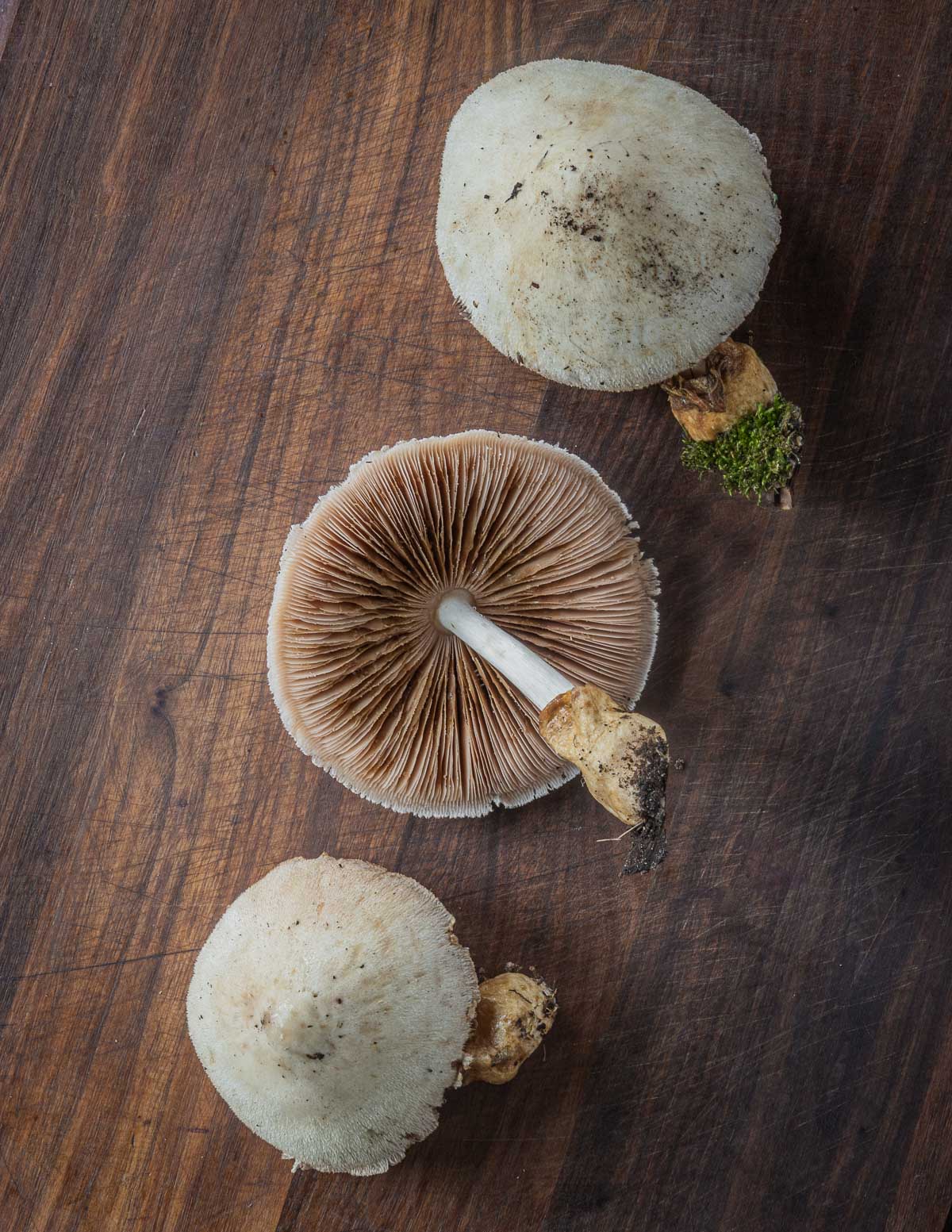
Habitat
A cousin of the deer mushroom in the Pluteus or Plutaceae family, V. bombycina is a decomposer of wood. The saprobic species is found growing singularly on old, rotting and decaying hardwood logs and trunks of standing trees through spring, summer and fall.
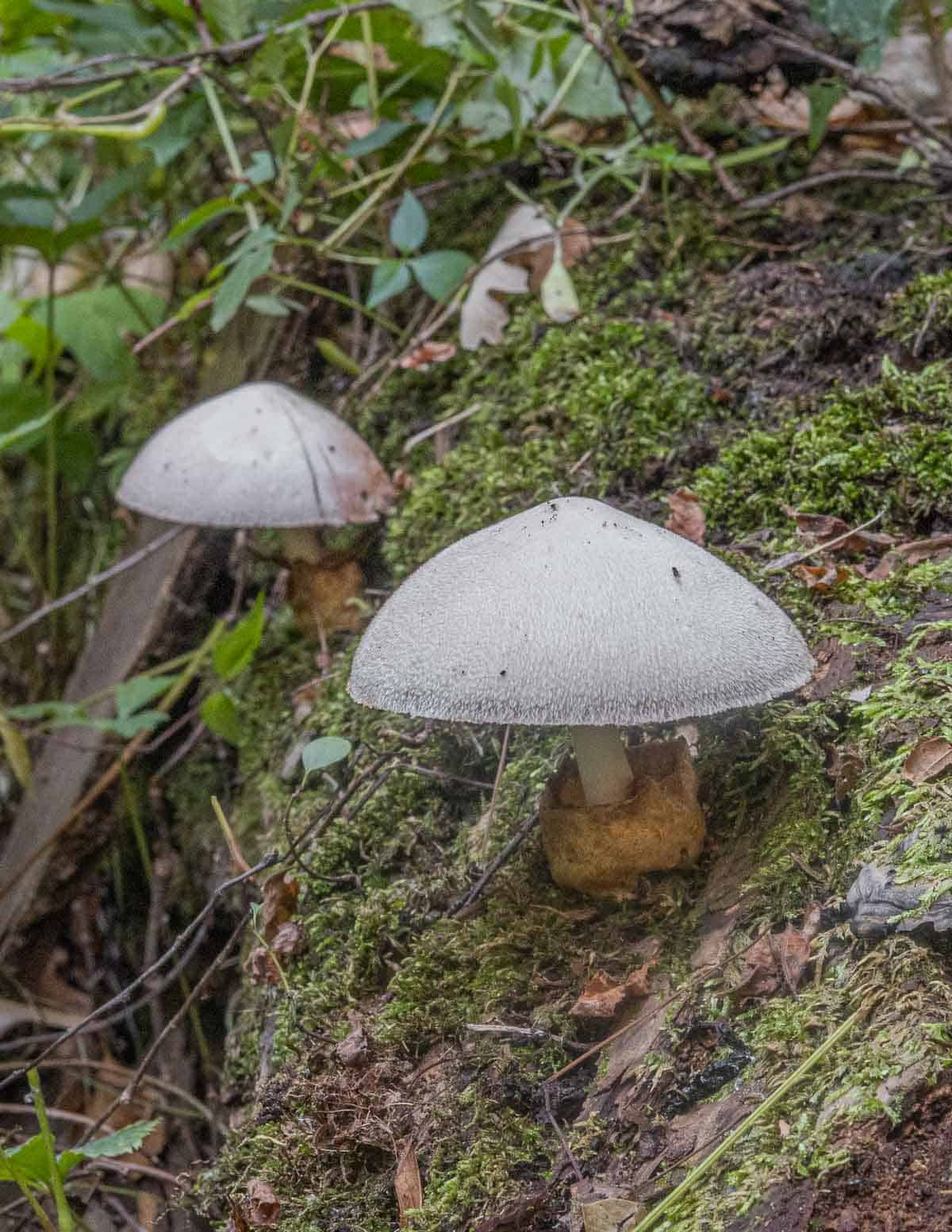
They can grow on numerous deciduous hardwoods like red maple, silver maple, sugar maple, beech, oak, magnolia and elm. It wouldn't surprise me if they grew on box elder too. In tropical regions it can grow on mango trees. Like the elm oyster (Hypsizygus ulmarius) they have a predilection for growing from wounds or knots in trees.
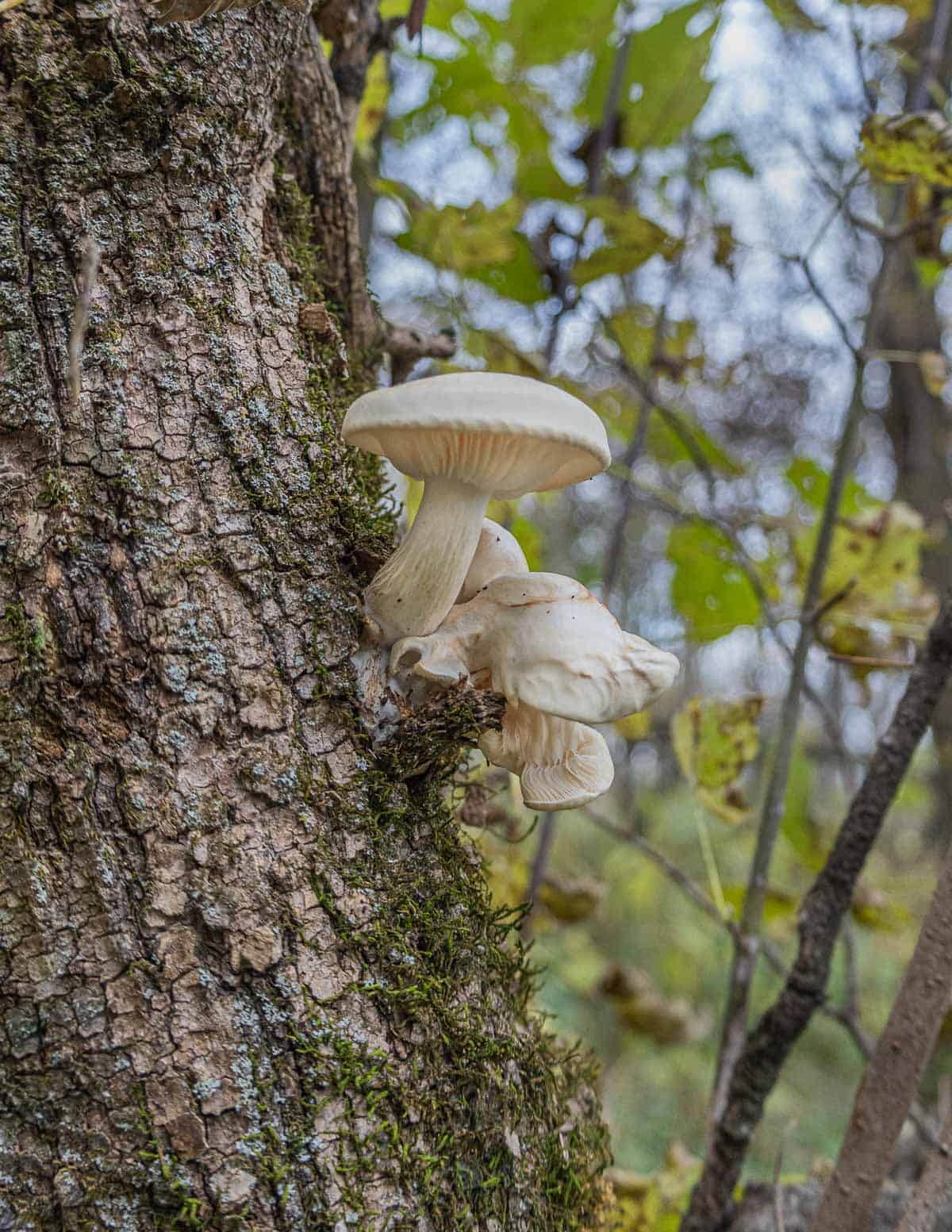
V. bombycina is widely distributed across North America, but west of the Rockies they seem to have a tendency to grow on cultivated trees and appear to be less common. Present around the world, they can also be found in the Caribbean, Central and South America and central Asia, Europe, and have even been reported in Africa.
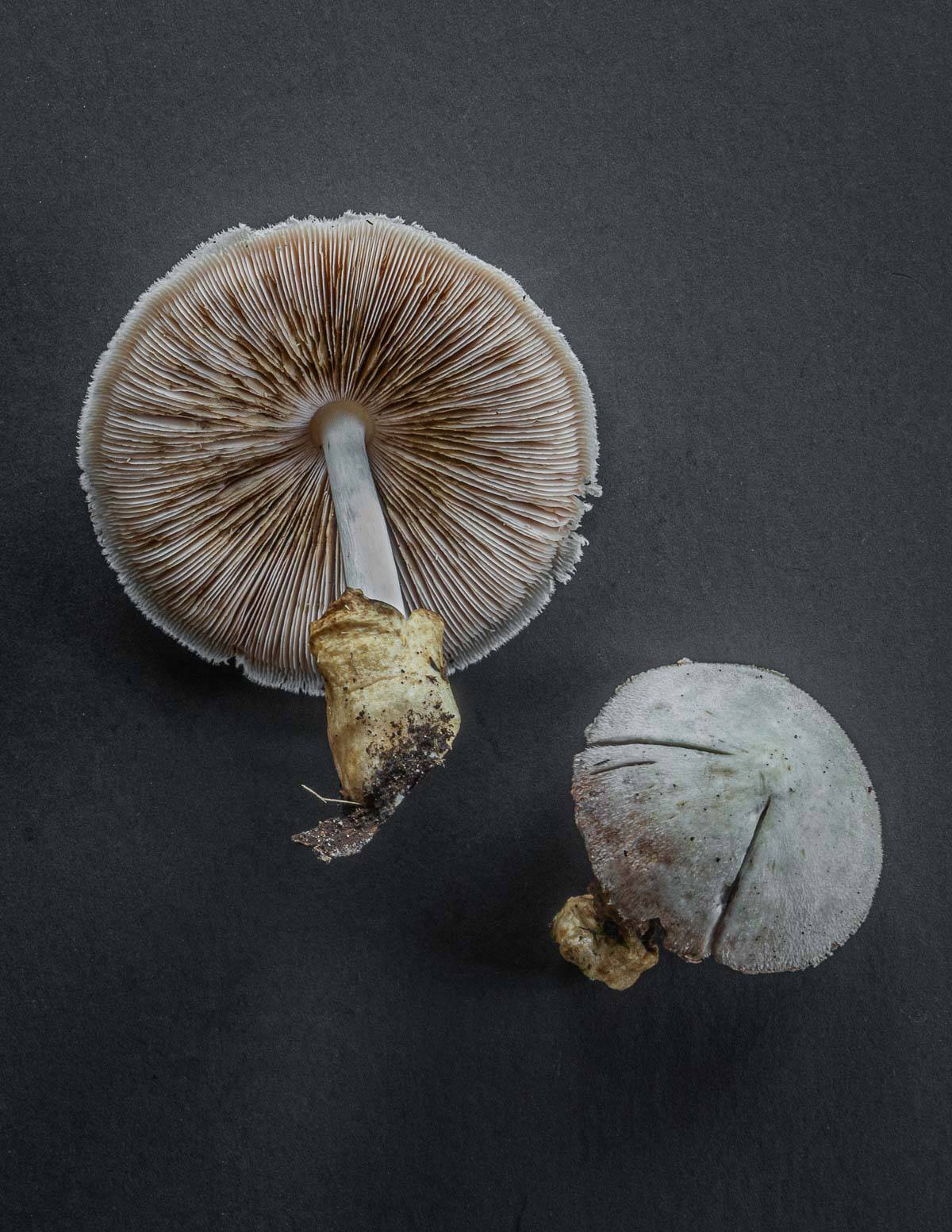
Besides V. bombycina, there's probably 50 or more species in the genera at this time of writing. One of my favorites is the paddy straw mushroom Volvariella volvacea, a species introduced to North America that grows on compost, straw, and woodchips.
They're sold in cans at just about every Asian grocer I know. They have an attractive shape, add texture to soups and curries, and they're cheap.
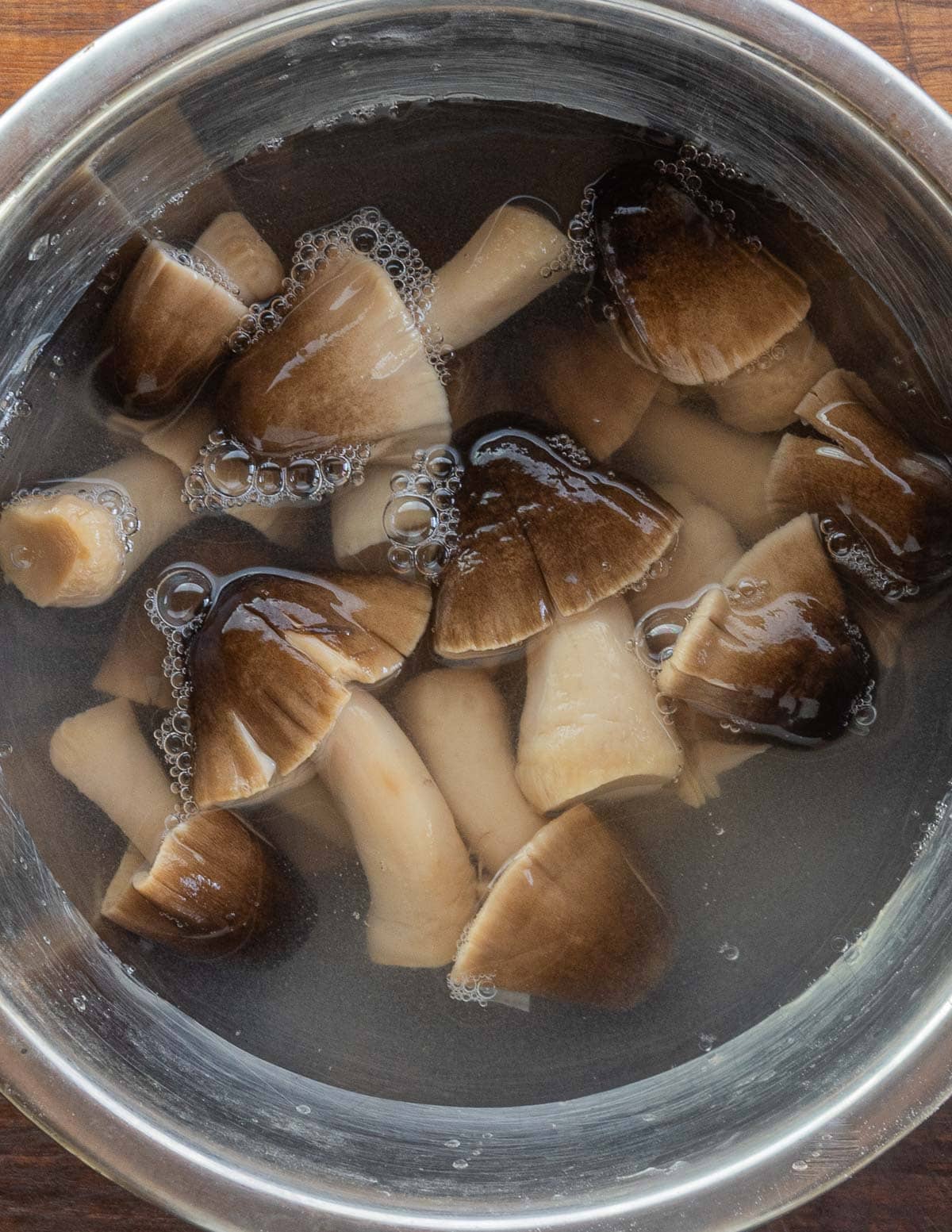
Identification
This is an easy mushroom to identify, but in order to pick it, you should know how to separate it from an amanita with certainty.
Here's a nice quote from Mycologist David Arora on V. bomycina:
"It is easier to identify this striking mushroom than to find it. The sikly cap, pale color, deep, sac-like volva, and growth on wood make it unmistakable. The latter feature plus the pinkish spores (and mature gills) separate it from Amanita, which also has a volva."
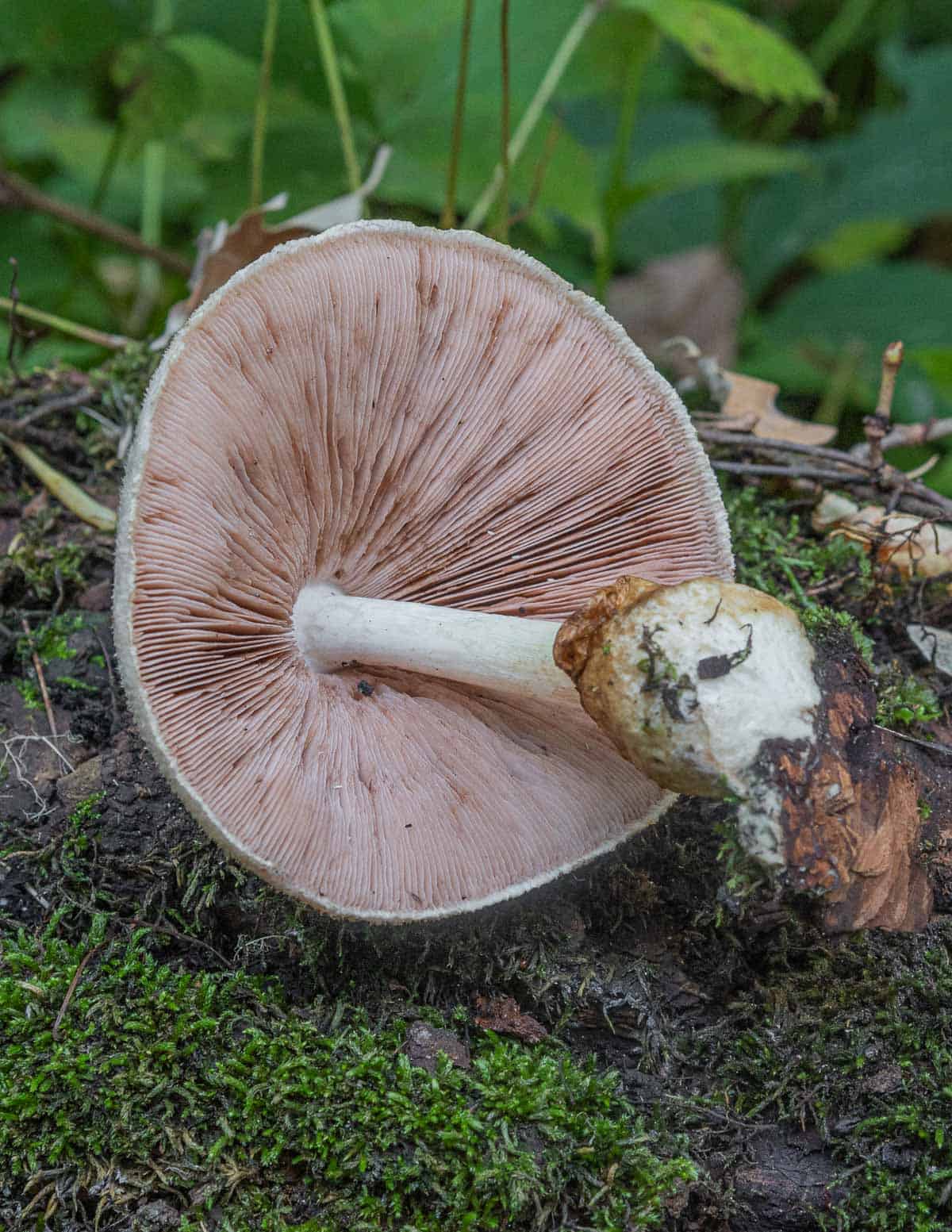
The most obvious characteristics I would note are below.
Volvariella bombycina:
- Has pink gills free from the stem that may be white when young.
- Lack of a ring (annulus) at the top of the stem.
- Growing on decomposing hardwood logs or on standing trees.
- Have a tell-tale, cup-like volva at the base.
- Pinkish brown spore print.
- A bell-shaped, white to yellowish cap that's covered with silky hairs.
- The center of the cap may be tinted yellow with age.
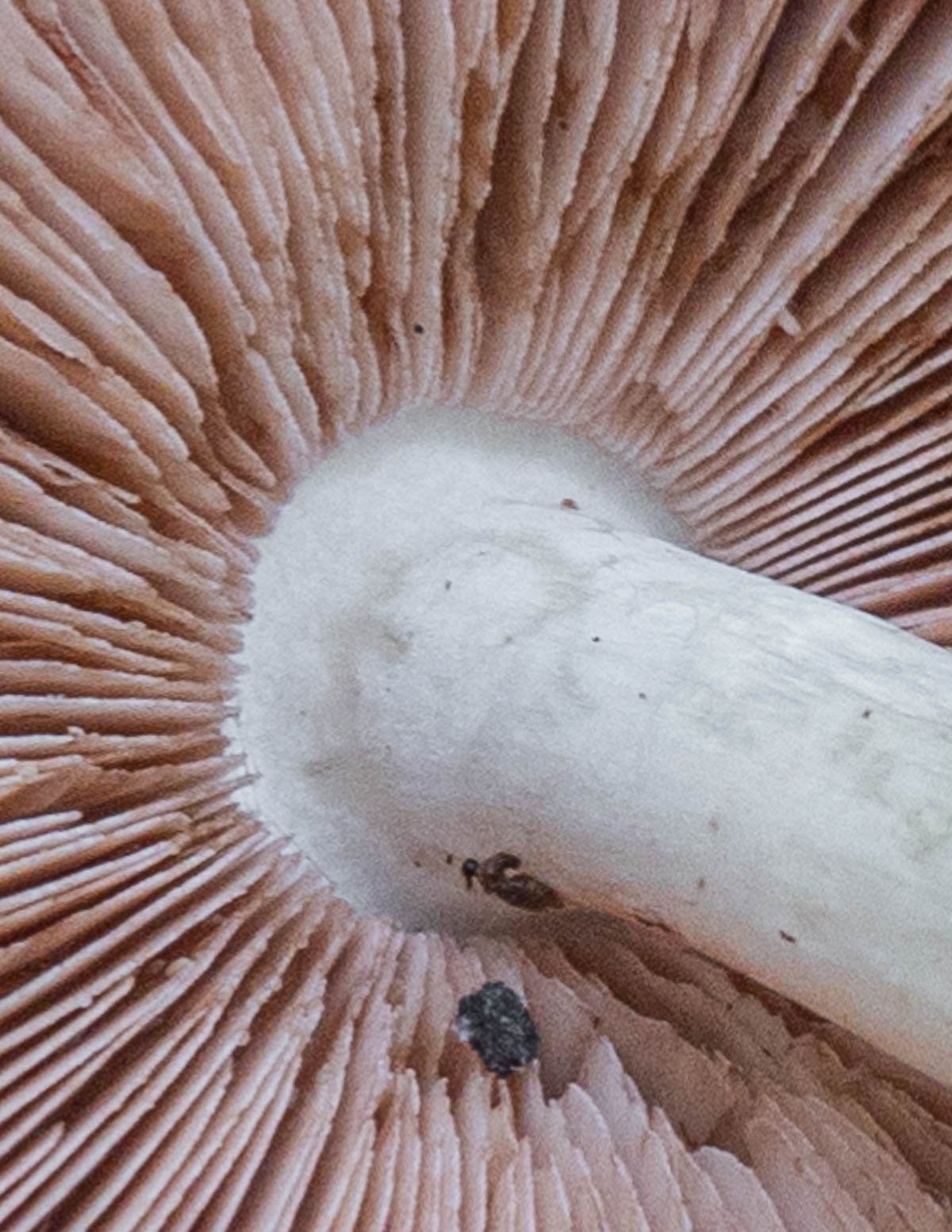
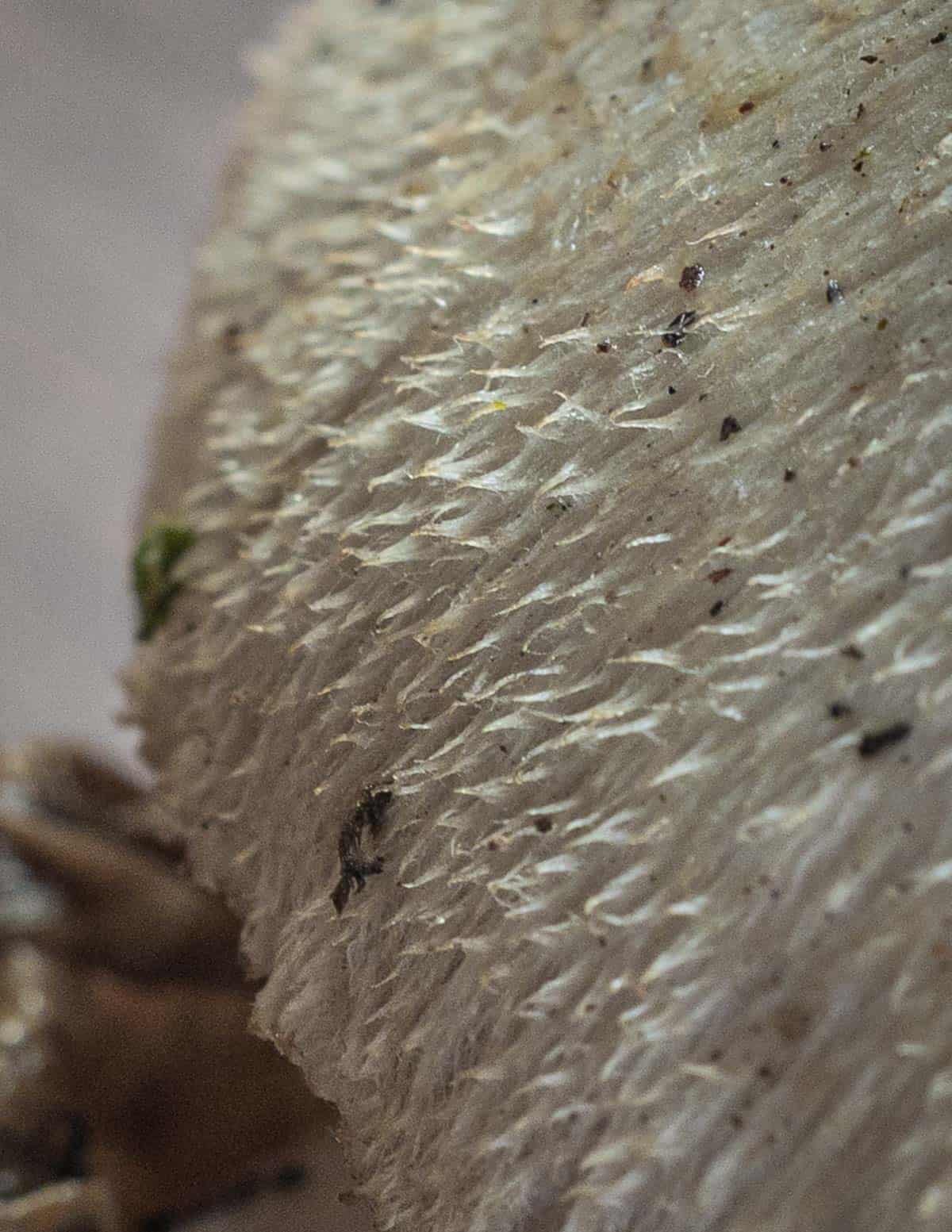
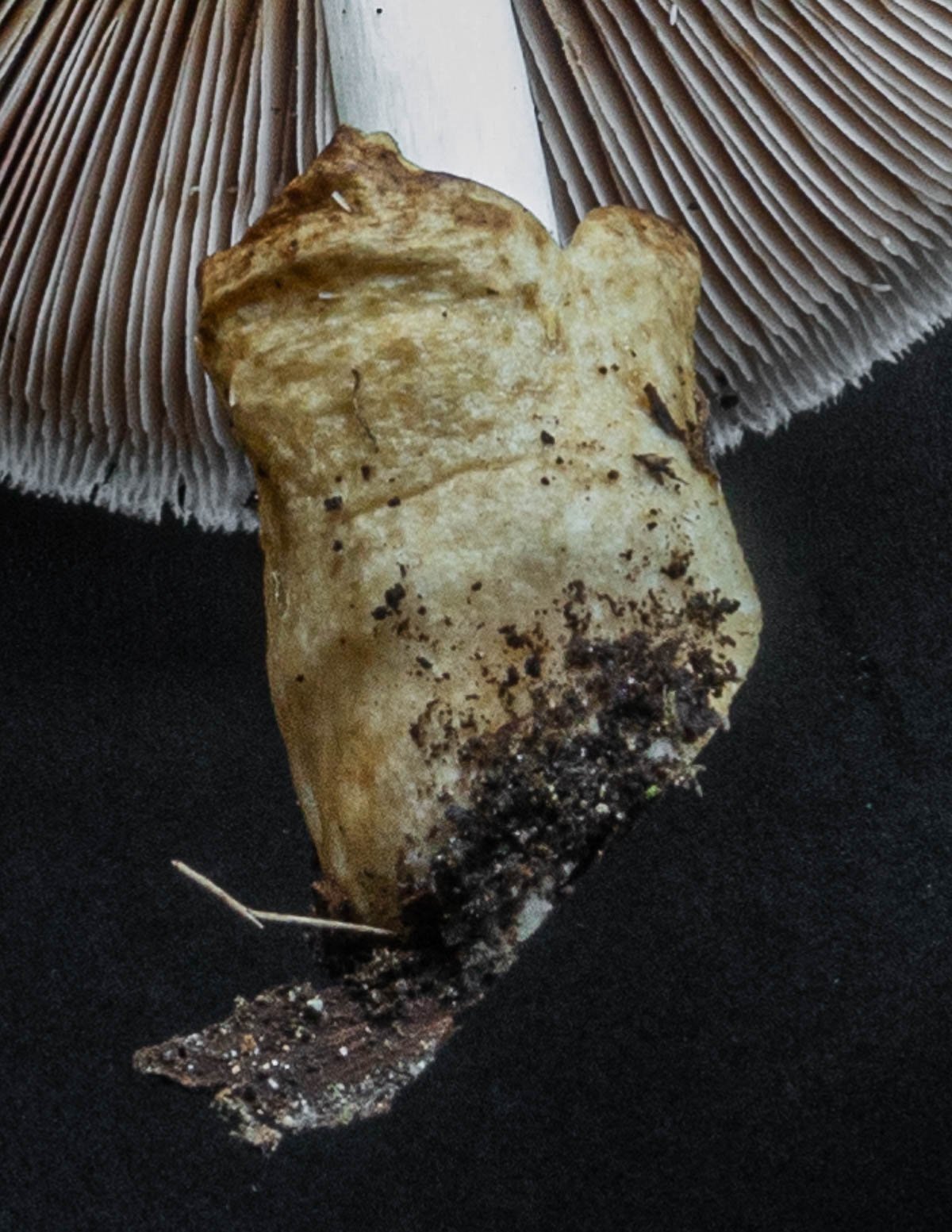
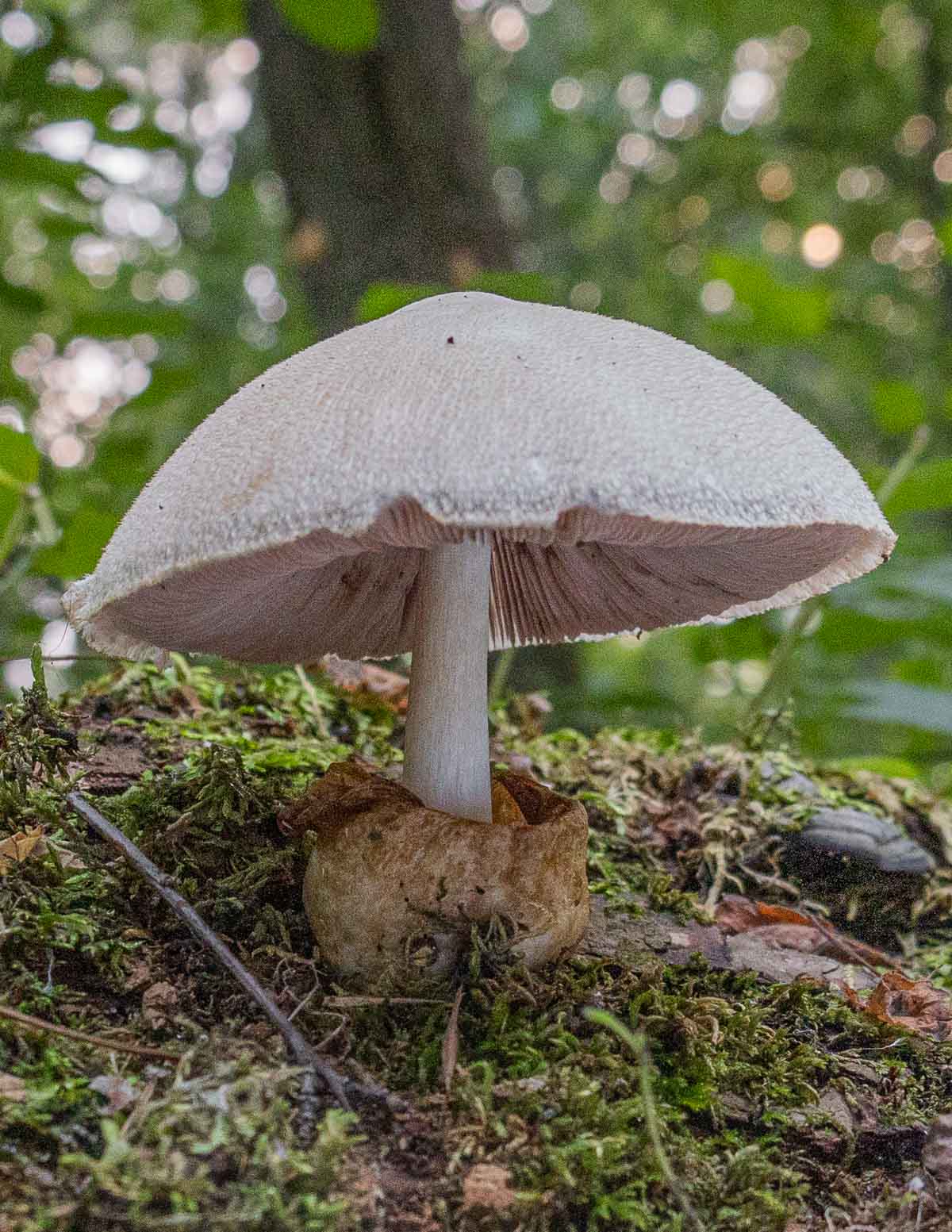
Volvariella bombycina vs Destroying Angel
The lethally poisonous destroying angel (Amanita bisporigera, phalloides, ocreata, et al) are the most common look-alike mushroom mentioned when discussing Volvariella. As terrifying as that sounds, the mushrooms are easy to tell apart by looking at a few key features.
Here's the biggest differences that stand out to me:
- Destroying angels are mycorrhizal (symbiotic) mushrooms that grow from the ground or above tree roots, not from rotting wood. V. bombycina grows from decaying wood and the trunks of trees.
- The amanitas have white gills. V. bombycina may have white gills when young, but they quickly turn pink.
- Amanitas typically show an annulus or thin ring around the top of the stem, Volvariella never do.
- The volva of V. bombycina is membranous and flaccid with age. After picking, they begin to deteriorate within a few days. Amanita volvas will are more white and seem to hug the base of the stem, where V. bombycina has a cup-shaped volva.
- Destroying angels have a white spores and a white spore print. Volvariella have pinkish to pinkish brown spores.
The images below, courtesy of my friend Jamie Rockney, show destroying angels 3 different stages of growth.

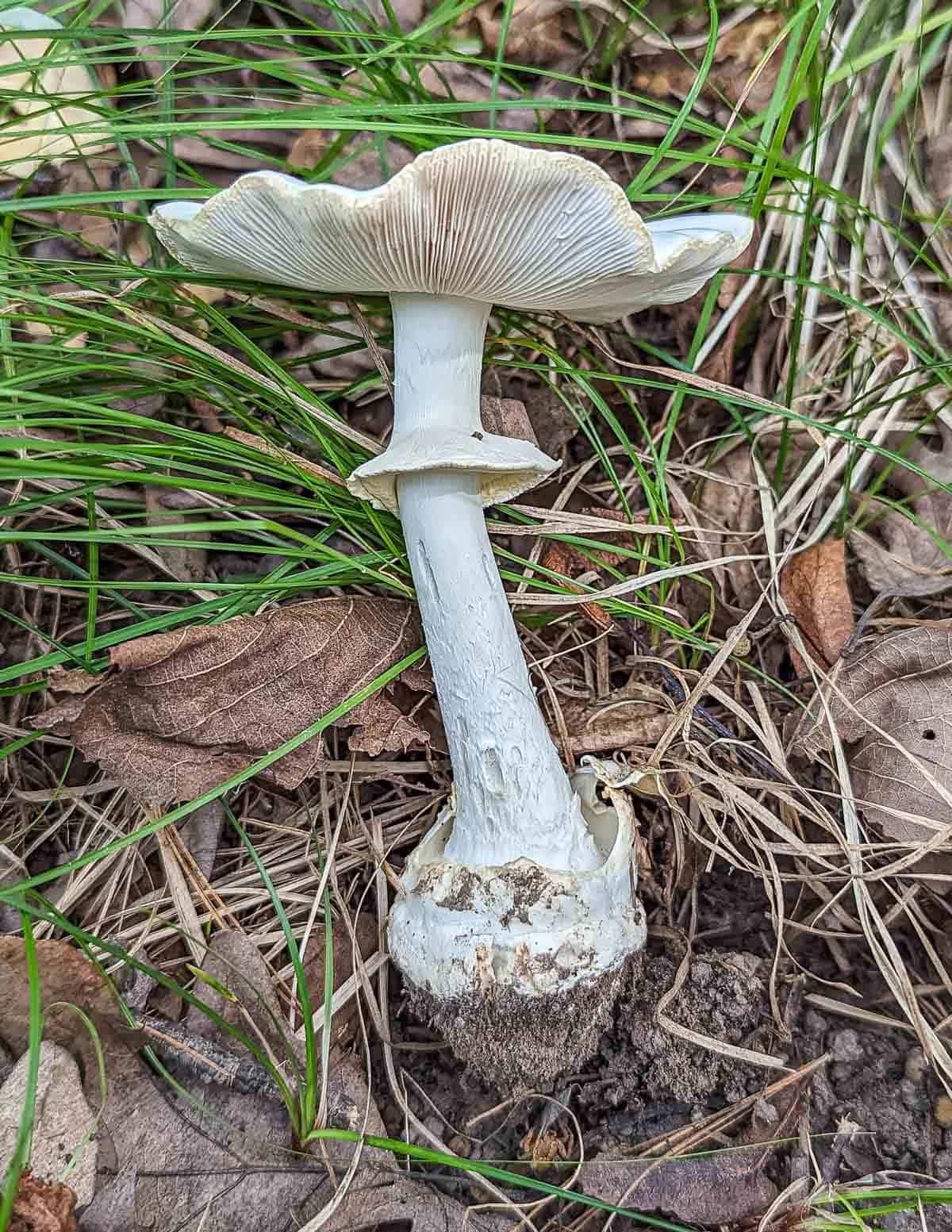
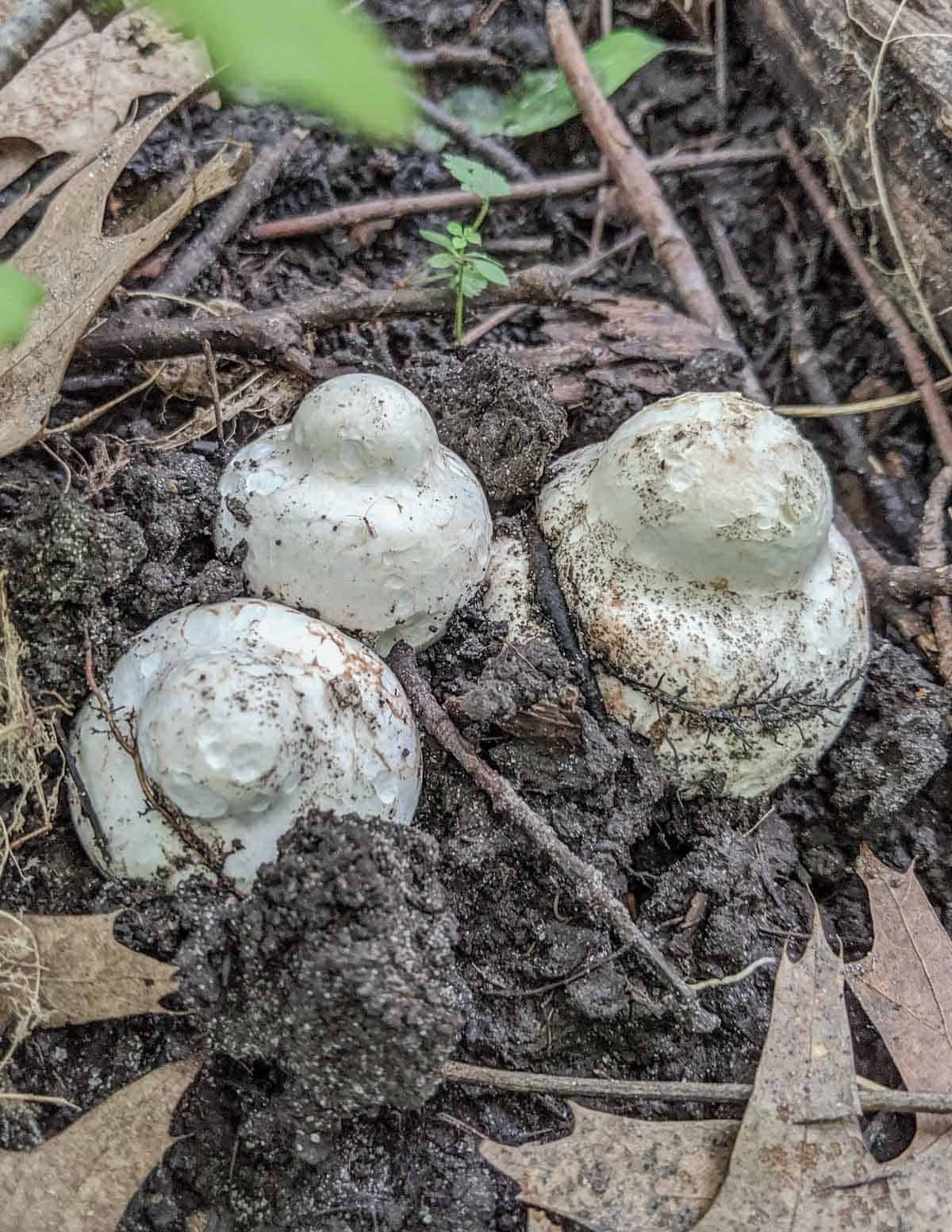
Cooking
David Arora says some consider silky straw mushroom to be a choice edible. Fried in butter to taste their flavor you'll be surprised by the rich nutty flavor, but they're the kind of mushroom I'll take when I see, not go out of my way for. They're also highly perishable. At the end of the day they're better than the Old Man of The Woods.
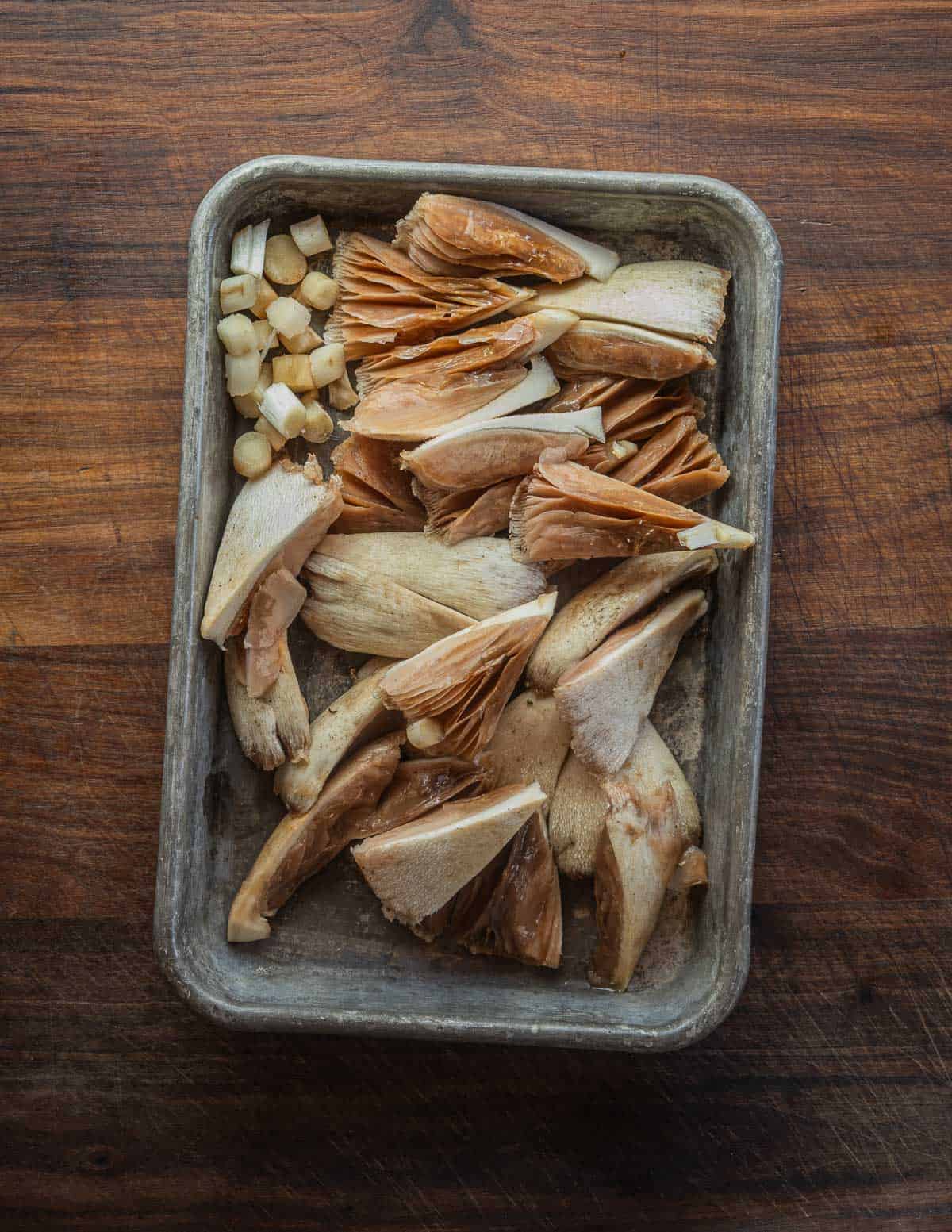
These can be cooked like any other mushroom, but, as they're related to paddy straw mushrooms I think it's fun to use traditional recipes for V. volvacea as a starting point.

Think stir-fries, miso soup, Tom kha Ghai, or, as I demonstrate in the video, a spicy Thai mushroom soup made with shrimp stock and coconut milk.
More Edible Mushrooms that Grow on Wood
Aborted Entoloma (Shrimp of the Woods)

Ian Feggins
Words can’t express my thanks! 🙏
Alan Bergo
Thanks Ian.
VELMA STERENBERG
Hello Alan. Kudos for the time and detail you put into describing this fungus, including comparison to Amanita look-a-likes, and great photos for I.D. Something that more foraging chefs should do; have you seen Chad Hyatt's Mushroom Hunter's Kitchen?
Not too likely to find the species up here, but certainly know what to look for now.
Cheers and good hunting.
Alan Bergo
Thanks Velma. Yes, Chad and I got to go hunt mushrooms with Tavis Lynch a few years ago when the NAMA was in Cable Wi. He also helped me out big time with a cooking demo and saved my keester. Great book, great guy.
Aurora
thanks Alan, for that extra, and most valuable, bit of info about the amanita - 4 ppl have just died in australia from eating deathcaps (i personally muscle test and pendulum ), but its still a concern . Cheers
Alan Bergo
Thanks. I feel like it's a little overkill but I wanted to be thorough for newcomers.
Kelly Armor
Yes, what a wonderful fungus! The first one I harvested was quite big and freshly "hatched" from its sac. It was so soft, silky, and seemingly pulsing with life I felt like I was carrying a newborn kitten!
Alan Bergo
Yeah they're really cute when they're young.